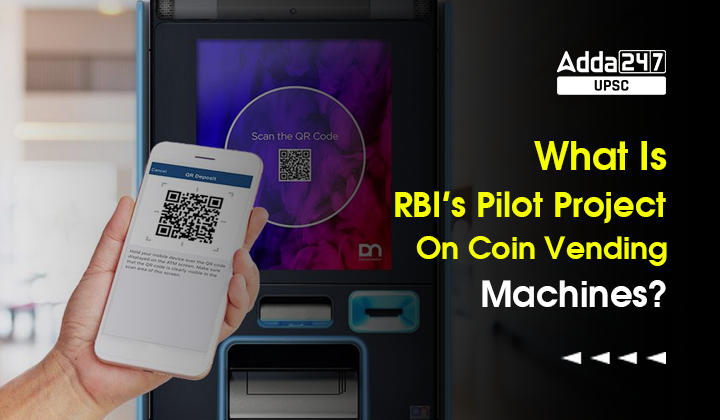Table of Contents
What Is RBI’s Pilot Project On Coin Vending Machines?
In This Article, ”What Is RBI’s Pilot Project On Coin Vending Machines?”, We Will Discuss About RBI’s Pilot Project On Coin Vending Machines, Pros and Cons Of QCVM, etc.
RBI’s Pilot Project On Coin Vending Machines In News
- During the last Monetary Policy Committee (MPC) address, RBI Governor Shaktikanta Das had stated that the the RBI in collaboration with banks, would be launching a pilot project to assess the functioning of a QR-code based coin vending machine.
- The pilot is initially planned to be rolled out at 19 locations in 12 cities across the country. With particular focus on ease and accessibility, the machines are intended to be installed at public places such as railway stations, shopping mall and marketplaces.
- This will enhance the ease of accessibility to coins. Based on the learnings from the pilot, guidelines will be issued to banks to promote the distribution of coins using these machines.
What is SAARC Currency Swap Framework? | RBI Signed Agreement With Maldives
About RBI’s Pilot Project On Coin Vending Machines
Coin Dispensing Machines: RBI’s New Pilot Project On Coin Vending Machines is simply based on an idea of a new kind of vending machines that would dispense coins with the requisite amount being debited from the customer’s account.
QR code-based: At present, a person will have to approach the bank branch to withdraw coins. QR code-based coin vending machine (QCVM) is intended to dispense coins similar to the manner in which currency notes can be withdrawn from ATMs.
UPI Based: Coin Vending Machines will be United Payments Interface (UPI) based instead of physical tendering of banknotes. UPI is a system that powers multiple bank accounts into a single mobile application, merging several banking features, seamless fund routing & merchant payments into one hood.
Customer Friendly: Customers would be endowed the option of withdrawing coins in required quantities and denominations. The central idea here is to ease the accessibility to coins.
Coin Denomination: Coins of denomination of Rs 1 – Rs 20 will be made available in QCVM.
To Properly Distribute Coins: On the supply side of things, the situation with respect to coins was ”peculiar” with the supply being ”very high”. As, it is taking up a lot of storage space and it is not getting properly distributed. At the same time, there is demand in pockets.
RBI Launched Retail Central Bank Digital Currency (CBDC) on Pilot Basis
Pros and Cons Of QCVM?
Pros
- Last mile availability of Cash(Coin Based).
- UPI Like Ease
- No requirement to exchange notes for coins.
- Ease of access to coins.
Cons
- Vending machines through third party agents could imply additional costs for banks.
- The average cost of minting a coin is Rs 1.11. If we add another layer for setting up and distributing coins through vending machines, it appears unattractive from a cost perspective.
- QCVM could be counterproductive For Digitization.
- QCVM seems to be defying the purpose of e-Rupee.
RBI’s Revised Bank Locker Rules To Be Effective From 1st Of January 2023



 TSPSC Group 1 Question Paper 2024, Downl...
TSPSC Group 1 Question Paper 2024, Downl...
 TSPSC Group 1 Answer key 2024 Out, Downl...
TSPSC Group 1 Answer key 2024 Out, Downl...
 UPSC Prelims 2024 Question Paper, Downlo...
UPSC Prelims 2024 Question Paper, Downlo...




